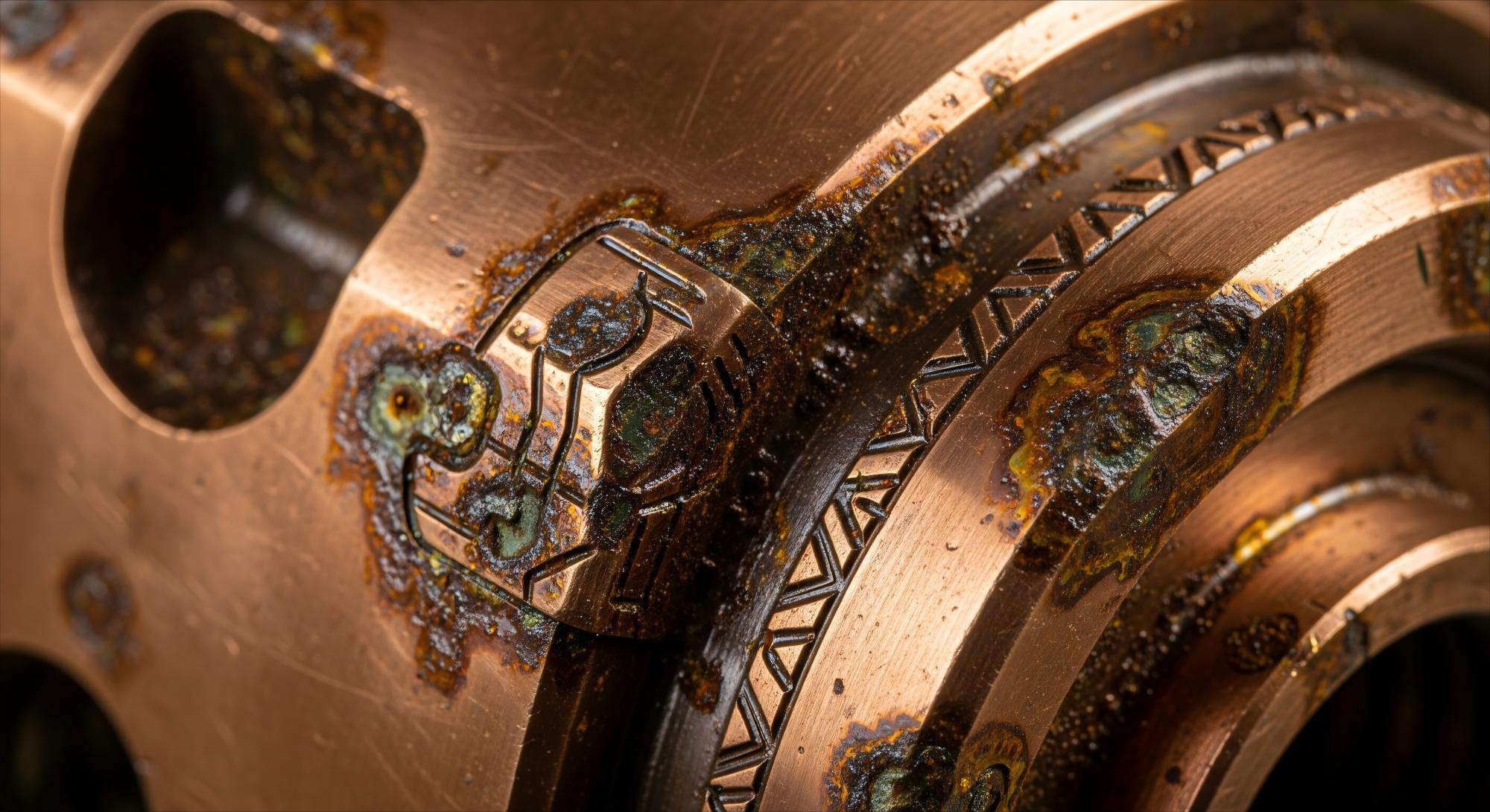
Stainless steel can develop rust if exposed to harsh environments or cleaned with the wrong products. Knowing how to remove rust from stainless steel at home can restore its shine with minimal hassle. Most methods to clean rust off stainless steel take about an hour or sometimes overnight, depending on the severity of the rust. Always use gentle techniques to protect the surface and make polishing easier.
Common causes of rust include:
- Acidic conditions and low pH
- High chlorine or chloride content in the air
- Chloramine vapor from indoor pools
- Aggressive cleaning chemicals
- Airborne condensation and poor ventilation
By following the right steps on how to remove rust from stainless steel, you can easily get rid of rust and bring back the polished, like-new appearance of your stainless steel.
Key Takeaways
- Use gentle household items like baking soda, vinegar, lemon, and salt to clean rust. These will not scratch stainless steel.
- Always scrub in the same direction as the metal lines. This keeps the surface smooth and shiny.
- Rinse and dry stainless steel well after cleaning. This stops new rust from forming.
- For hard rust, use stronger things like Bar Keepers Friend, oxalic acid cleaners, or a paste of baking soda and vinegar. Always follow safety rules when using them.
- Do not use rough scrubbers, steel wool, bleach, or mix cleaning chemicals. This keeps your stainless steel and you safe.
- Clean often with mild soap and water. This helps keep the protective layer and stops rust before it starts.
- Dry stainless steel all the way after washing or spills. This stops water spots and rust from showing up.
- You can use protective coatings to cover stainless steel. This keeps out water, air, and chemicals, and helps it last longer and stay shiny.
Baking Soda
Remove Rust from Stainless Steel
Table of Contents
Baking soda is a safe way to get rid of rust on stainless steel. It works well for small or medium rust spots. You do not have to worry about it hurting your pans or kitchen tools. Baking soda is a gentle scrubber. It cleans the surface but keeps the metal shiny.
Paste Application
First, mix three parts baking soda with one part water. Make a thick paste that sticks to the rusty spots. Use a soft cloth or a sponge that will not scratch. Put the paste right on the rust. Wait for 30 minutes. This gives the baking soda time to break down the rust. After waiting, it will be easier to scrub off the rust.
Rubbing Direction
When you scrub, move your cloth or sponge along the grain of the stainless steel. This helps stop scratches and keeps the finish smooth. Press gently and evenly. If some rust stays, do it again or let the paste sit longer. Do not use steel wool or rough pads. These can scratch the surface.
Tip: Baking soda is safe and non-toxic. You can use it on things that touch food, like kitchen sinks, forks, and pans.
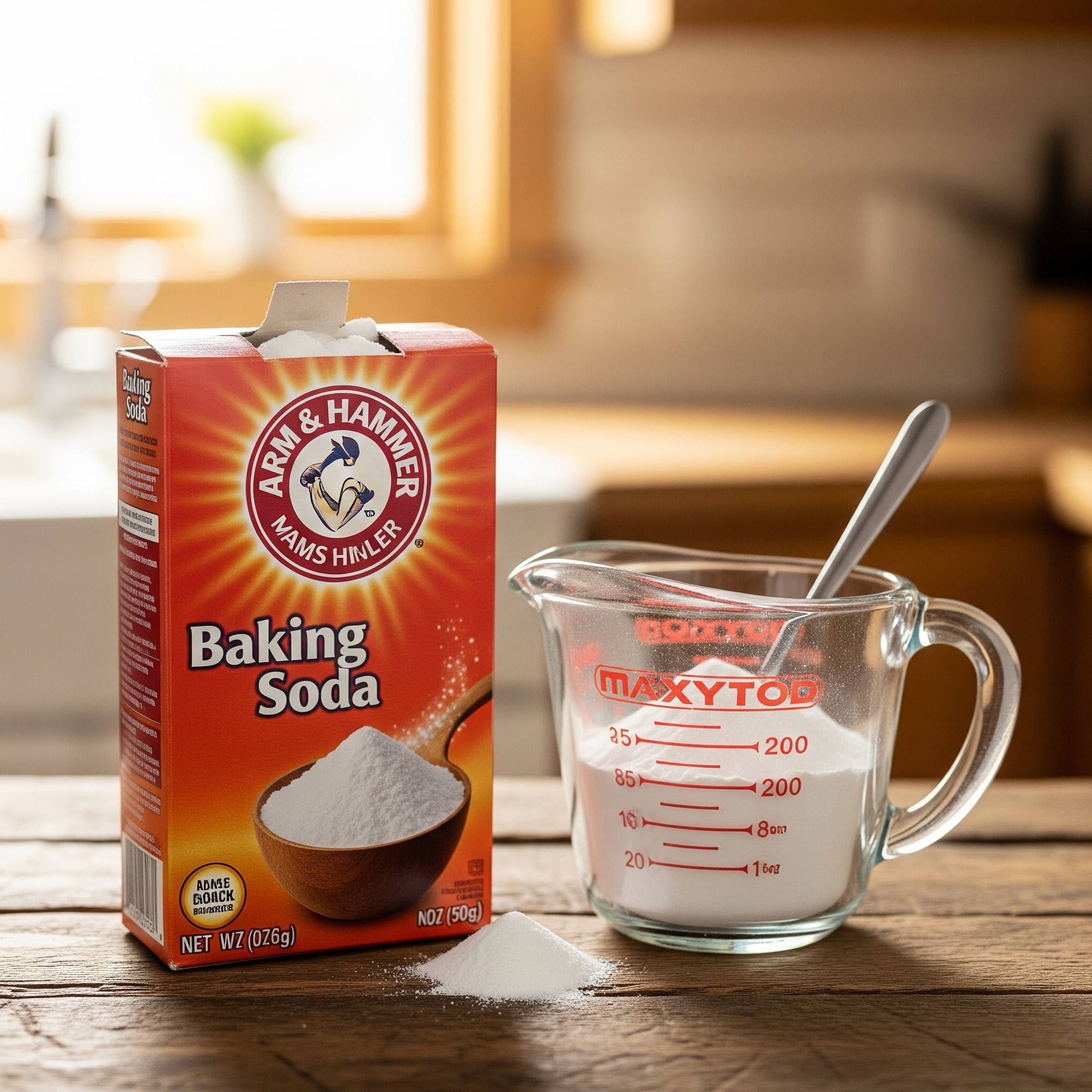
Baking soda works as well as other home remedies. Here is a table to show how it compares:
| Remedy | Effectiveness on Stainless Steel Rust | Method Description | Suitability/Notes |
|---|---|---|---|
| Baking Soda | Effective for light rust | Make a thick paste with water, apply, leave for hours/overnight, then scrub with steel wool or brush | Gentle, non-toxic, ideal for food-contact metals |
| White Vinegar | Effective, especially for soaking | Soak the item overnight in vinegar; the acid breaks down rust | Good for small items; requires rinsing and drying |
| Lemon Juice & Salt | Potent for rust stains | Sprinkle salt, add lemon juice, let sit for hours, then scrub | Safe, eco-friendly, good for delicate metals |
| Potato & Dish Soap | Effective for small/intricate items | Rub cut potato dipped in dish soap on rust, let sit, then rinse | Uses oxalic acid; good for detailed objects |
| Commercial Removers | Highly effective, fast | Apply as per instructions, wait, scrub | Requires safety gear; stronger chemicals |
| Aluminum Foil Scrub | Gentle abrasive | Rub foil dipped in water or vinegar on rust | Minimizes scratching; chemical reaction aids rust removal |
| Citric Acid Solution | Effective for small parts | Soak in hot citric acid solution overnight, then scrub | Mild acid; good for tools and small metal parts |
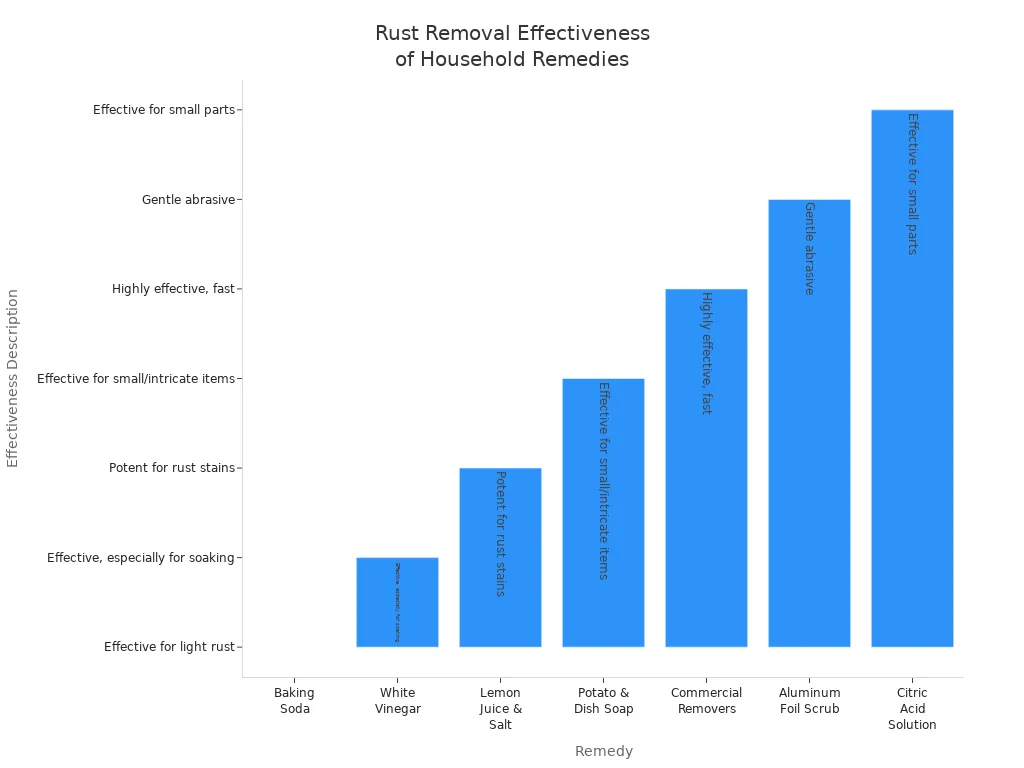
Baking soda is a weak scrubber. It takes off rust but does not hurt the special layer on stainless steel. This keeps your metal shiny and makes cleaning easier next time. If you have a lot of rust, try vinegar or lemon juice. For most kitchen rust, baking soda is the best first thing to try.
Safety Tips
- Always use a soft cloth or a sponge that will not scratch.
- Do not use steel wool or rough scrubbers.
- Rinse the area well after cleaning to wash away baking soda.
- Dry the surface all the way to stop new rust.
Using baking soda often helps keep your stainless steel clean and free from rust. It also helps your metal last longer.
Vinegar
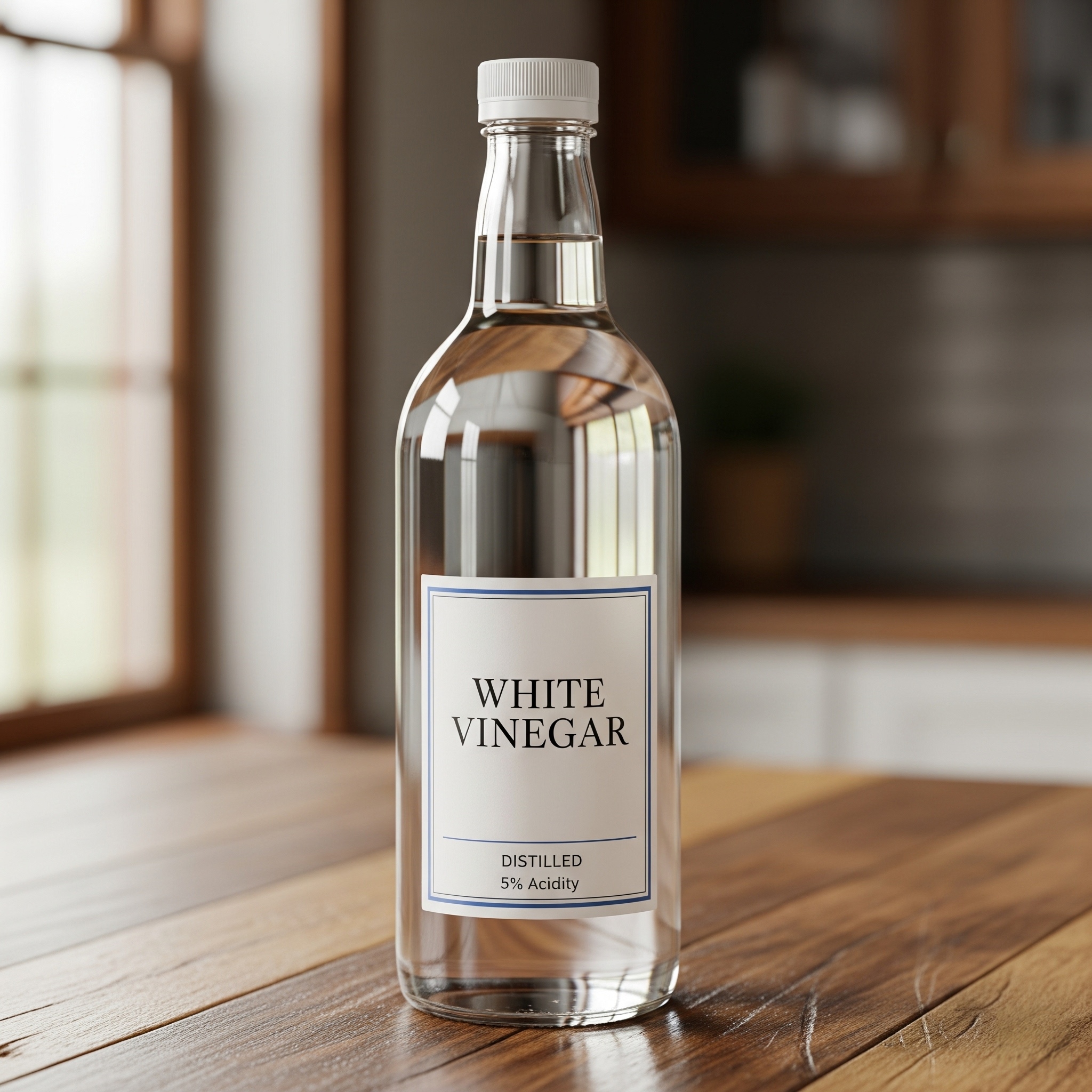
How to Remove Rust
Vinegar is a simple way to get rid of rust on stainless steel. White vinegar has acetic acid that helps break down rust. This works best for small items or light rust. Many people use vinegar because it is easy to buy and safe for most things at home.
Soaking Time
First, pour white vinegar into a bowl or container. Make sure the rusty part is covered. Put your stainless steel item in the vinegar. Let it soak for 15 to 30 minutes. The acid in vinegar reacts with the rust and helps loosen it. For bigger spots, soak a cloth in vinegar. Lay the wet cloth over the rust. After soaking, use a soft brush or sponge to scrub off the rust. Always scrub in the same direction as the grain. This helps stop scratches.
Tip: If rust does not come off, soak it again or wait longer. Do not leave stainless steel in vinegar for hours. This can damage the finish.
Aftercare
After you clean off the rust, rinse the item with clean water. This step is important because vinegar can stay on the metal and cause more rust. Dry the surface with a soft towel. This stops new rust and keeps your stainless steel shiny.
Note: Vinegar can make the finish look dull if left too long. Always rinse and dry right after using vinegar.
Safety Tips
Vinegar is popular for cleaning rust, but you must be careful. Some makers say vinegar’s acid can harm or dull stainless steel if left on too long. If you leave it too long, it can cause spots or pits. Do not use vinegar on knives, cookware, or appliances unless you mix it with water and rinse well.
- Mix vinegar with the same amount of water for delicate things.
- Never let vinegar sit for more than 30 minutes.
- Rinse and dry the surface after cleaning.
- Do not use vinegar too often or the wrong way.
Vinegar can clean rust from stainless steel, but always follow these safety tips to keep your items looking good.
- Vinegar removes rust by reacting with iron oxides, but it can also hurt the metal if left too long.
- Most tests show vinegar works, but it is not always the best way compared to lemon juice or other acids.
- There is no exact success rate for vinegar, but many people like it for light rust.
If you want to clean rust safely, vinegar is a good choice for small jobs. Always use it with care, and rinse and dry your items after.
Lemon and Salt
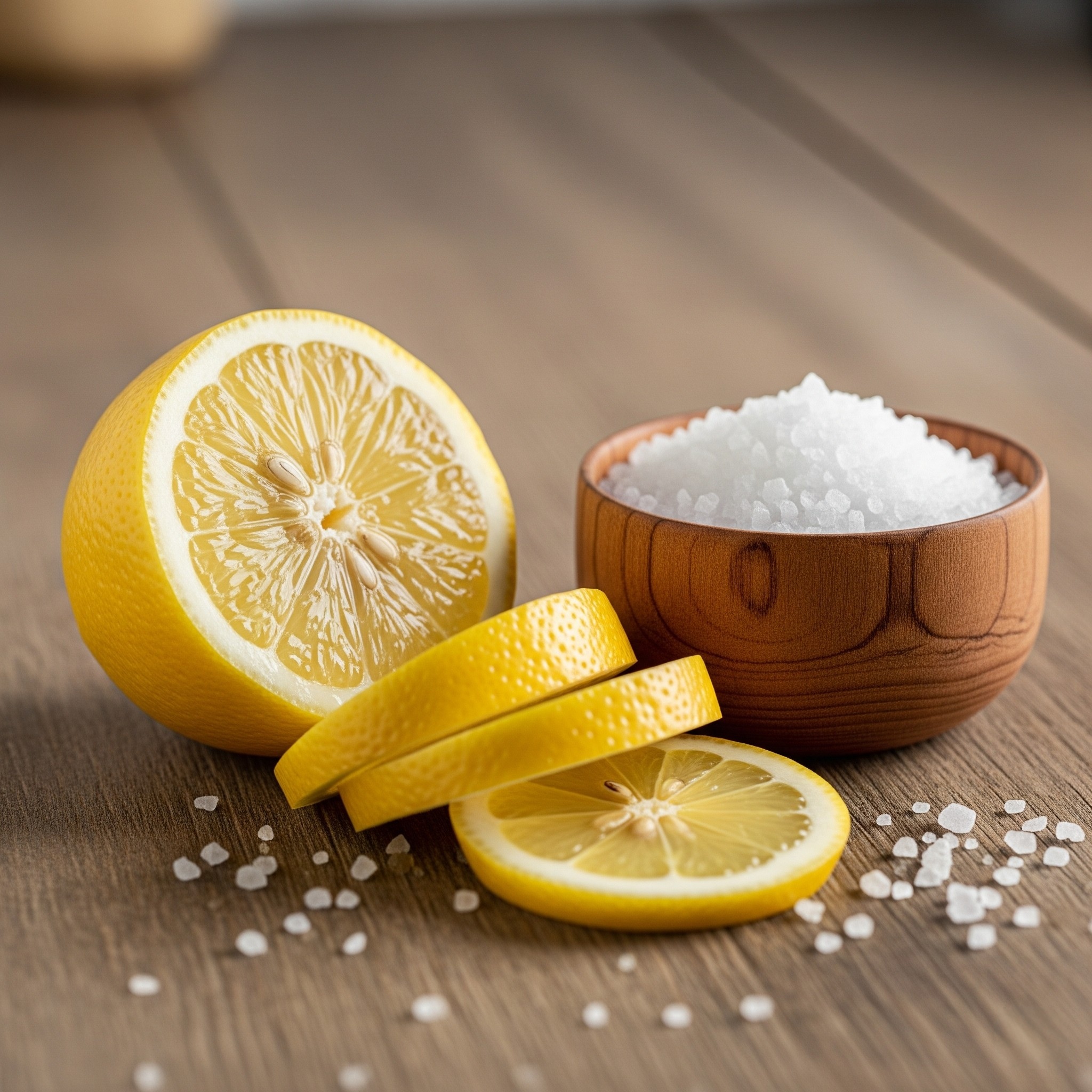
Remove Rust
Lemon and salt are a quick, natural way to clean rust from stainless steel. You probably have both in your kitchen already. Lemon juice has citric acid. This acid reacts with iron oxide, which is what rust is made of. The reaction helps break up the rust so it can be wiped away. Salt is a gentle scrubber. It helps you rub off the rust without scratching the metal.
Application Steps
To use lemon and salt for rust, do these steps:
- Put a lot of salt on the rusty spot.
- Cut a lemon in half. Squeeze juice over the salt until it is wet.
- Let it sit for 10 to 15 minutes. If the rust is tough, wait up to 2 hours.
- Use the lemon half to scrub the rust. Rub gently and follow the grain of the steel.
- If rust stays, add more salt and lemon juice and try again.
Tip: Lemon juice and salt work together to clean rust fast and safely.
Wiping Clean
When you finish scrubbing, wipe the spot with a damp, soft cloth. Rinse the stainless steel with water to wash off any lemon juice and salt. Dry the metal with a towel. This stops new rust and keeps your stainless steel shiny.
Safety Tips
Lemon and salt are safe for most stainless steel. You do not need strong chemicals or special tools. This works best for small rust spots. For heavy rust, you might need a commercial remover. Always test lemon and salt on a hidden spot first. Some finishes may react in a different way.
- Do not use steel wool or rough pads. These can scratch the metal.
- Always rinse and dry after cleaning.
- Wear gloves if your skin is sensitive.
Here is a table that compares lemon and salt with commercial rust removers:
| Aspect | Lemon and Salt | Commercial Rust Removers |
|---|---|---|
| Active Component | Citric acid in lemon juice + salt | Powerful rust-fighting chemical agents |
| Application Method | Paste applied, left 10-15 minutes, then scrub | Apply, let sit briefly, wipe or rinse off |
| Effectiveness | Effective for minor/light rust | Fast and effective on tough/stubborn rust stains |
| Time Required | 10-15 minutes + scrubbing | Often works within minutes |
| Surface Impact | Requires scrubbing, potential abrasion | Chemical reaction removes rust without scrubbing |
| Safety and Suitability | Natural, affordable, common household remedy | Safe for all stainless steel types |
| Result | Removes light rust | Restores shine, leaves no residue |
| Effort | Moderate (scrubbing needed) | Low effort (chemical action) |
Lemon and salt are a natural and cheap way to clean rust. You can use them on sinks, utensils, and appliances. For tough rust, commercial products may work faster and need less work.
Baking Soda and Vinegar
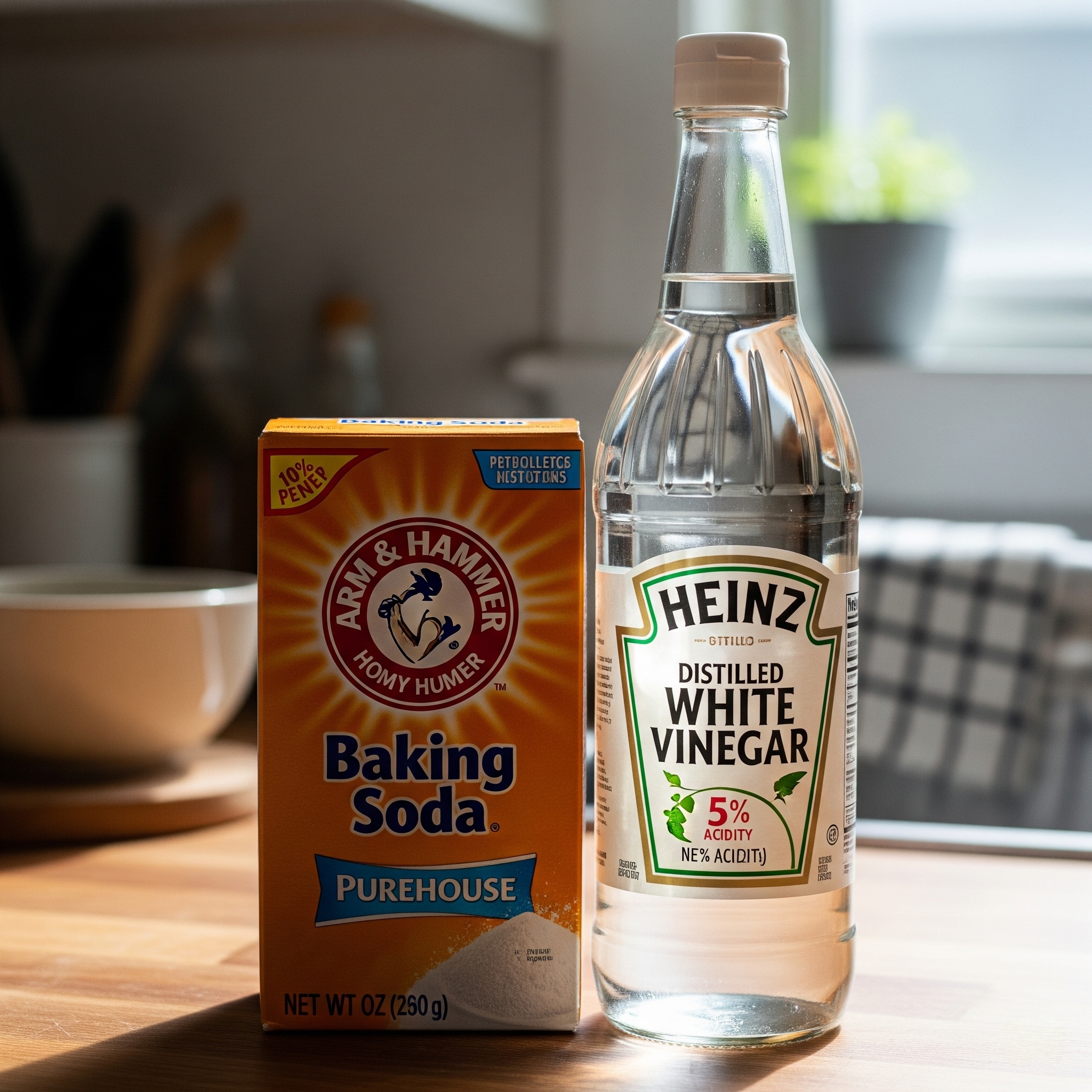
How to Remove Rust from Stainless Steel
Combining baking soda and vinegar creates a bubbly paste that can help you remove rust from stainless steel. This method works well for stubborn stains that do not come off with baking soda or vinegar alone. You can use this approach on kitchen sinks, appliances, or utensils that need a deeper clean.
Paste Mixing
To make the paste, follow these steps:
- Sprinkle a generous amount of baking soda over the rusty area.
- Pour white vinegar slowly onto the baking soda. You will see bubbles form right away.
- Wait until the bubbling stops. This means the reaction has finished.
- Use a spoon or spatula to mix the baking soda and vinegar into a thick paste.
Tip: The bubbling action helps lift rust from the surface, making it easier to scrub away.
Gentle Rubbing
After you prepare the paste, apply it directly to the rust spots. Use a soft cloth or a non-abrasive sponge. Rub gently along the grain of the stainless steel. This protects the finish and avoids scratches. If the rust does not come off right away, let the paste sit for 10 to 15 minutes. Then, scrub again with gentle pressure.
You may need to repeat the process for heavy rust. Always rinse the area with clean water after scrubbing. Dry the surface completely with a towel to prevent new rust from forming.
Many people want to know how to remove rust from stainless steel without damaging the surface. This method gives you a safe and effective option for tough stains.
Safety Tips
Mixing baking soda and vinegar is safe for most cleaning tasks. When you combine them, they react to form water and a small amount of salt. This reaction creates bubbles but does not produce any dangerous chemicals. You do not need to worry about harmful fumes or skin hazards from the mixture itself.
However, keep these safety tips in mind:
- Wear gloves if you have sensitive skin or if you use vinegar for a long time.
- Work in a well-ventilated area to avoid strong vinegar odors.
- Do not use steel wool or harsh pads, as these can scratch stainless steel.
- Always rinse and dry the surface after cleaning to remove any leftover residue.
Note: Baking soda and vinegar neutralize each other, so the cleaning power comes from the bubbling action and gentle abrasion. For deep rust, you may need to repeat the process or try another method.
Using baking soda and vinegar together gives you a simple way to remove rust from stainless steel. You can use this method when you want to know how to remove rust from stainless steel at home, especially for stubborn spots that resist other cleaners.
Bar Keepers Friend
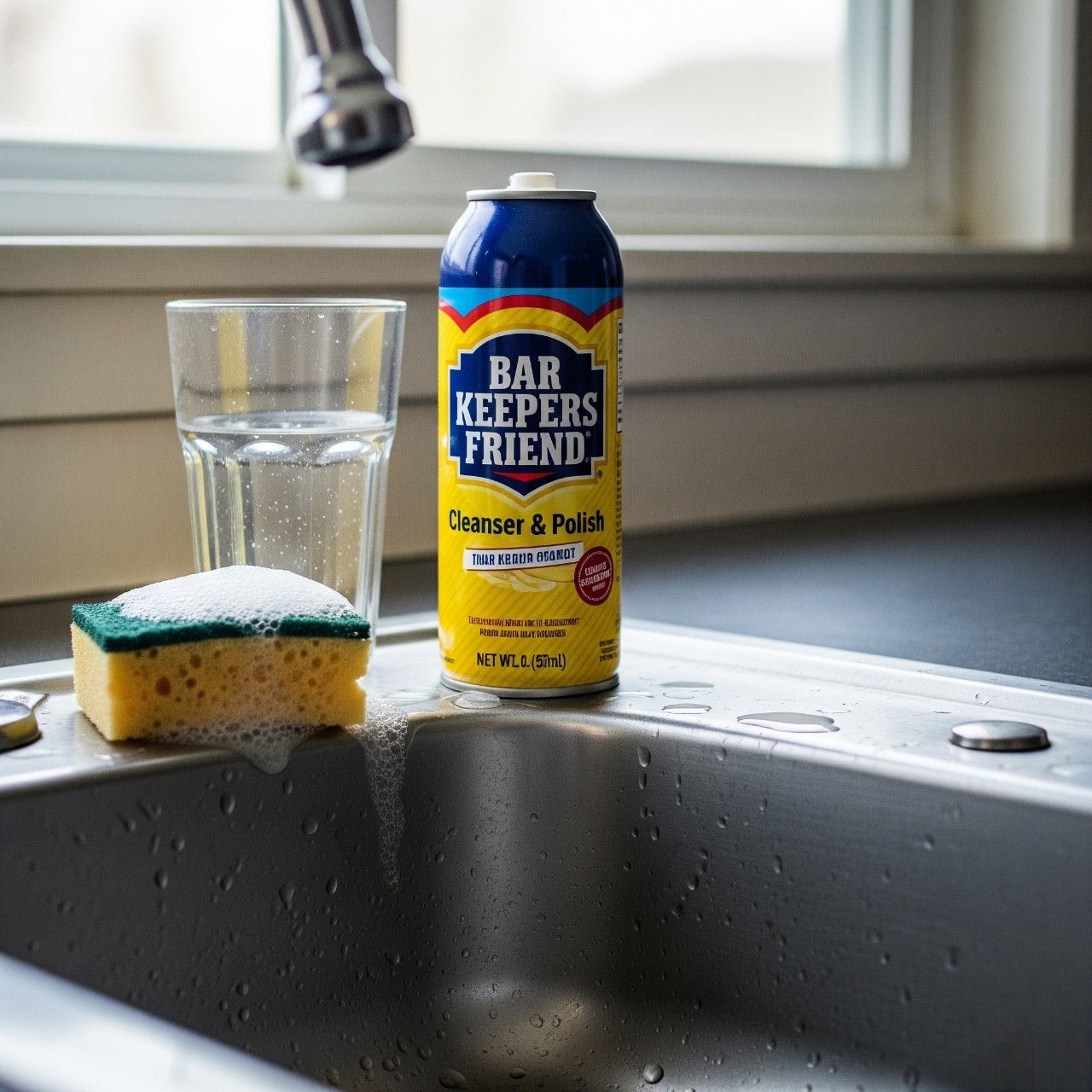
Remove Rust
Bar Keepers Friend gives you a powerful way to remove rust from stainless steel. This cleaner uses oxalic acid as its main ingredient. Oxalic acid works by breaking down rust stains and mineral deposits. You can trust Bar Keepers Friend for tough cleaning jobs that other home remedies cannot handle.
Cleaner Application
To use Bar Keepers Friend, start by wetting the stainless steel surface. Sprinkle a small amount of the powder or apply the liquid form directly onto the rust stains. Use a damp, soft sponge or cloth to gently rub the cleaner over the area. Always move along the grain of the metal. You will see the rust start to lift away as you work. Most users find that Bar Keepers Friend removes rust quickly, often in less than a minute.
Bar Keepers Friend stands out because of its unique blend of ingredients. Oxalic acid acts as the main chemical agent, while feldspar or glass oxide provides gentle scrubbing action. The product also contains a surfactant to help lift dirt and stains. Here is a quick look at what each ingredient does:
| Ingredient | Role in Rust Removal on Stainless Steel |
|---|---|
| Oxalic Acid | Primary chemical agent; removes rust and mineral deposits |
| Feldspar / Glass Oxide (abrasive) | Provides mechanical scrubbing action |
| Sodium Dodecyl Benzene Sulfonate | Surfactant; aids cleaning but not rust removal |
Bar Keepers Friend has a long history of success. Chemists discovered oxalic acid’s cleaning power in the 1880s. Today, you can use this trusted formula to remove rust from stainless steel in your kitchen, bathroom, or workshop.
Rinse and Dry
After you finish scrubbing, rinse the area with clean water. Make sure you remove all traces of the cleaner. Dry the surface right away with a soft towel. This step helps prevent new rust stains from forming. If you see any rust left, repeat the process for stubborn spots.
Tip: Always test Bar Keepers Friend on a small, hidden area first. This helps you avoid unwanted changes to the finish.
Safety Tips
Bar Keepers Friend is safe for stainless steel when you use it as directed. You should never let the cleaner sit on the surface for more than one minute. Rinse thoroughly to protect the metal’s shine. Wear gloves if you have sensitive skin. Avoid using steel wool or rough pads, as these can scratch the surface.
- Always follow the instructions on the label.
- Use gentle pressure and soft materials.
- Rinse and dry the area after every use.
Bar Keepers Friend works better than many other cleaners for how to remove rust from stainless steel. It removes rust stains that baking soda or vinegar cannot handle. You can rely on this product for deep cleaning and restoring a shiny, like-new look to your stainless steel.
Commercial Cleaners
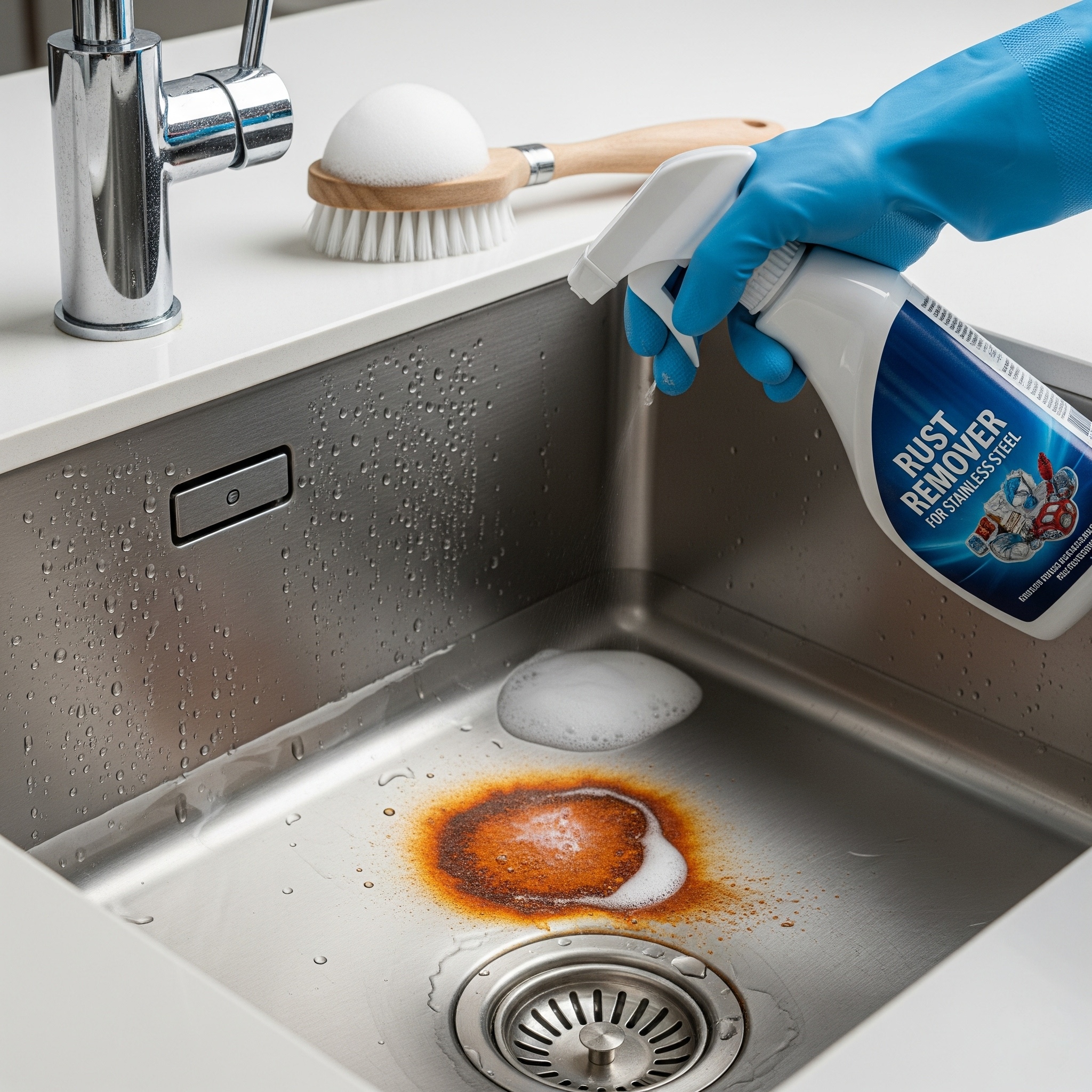
How to Remove Rust
Commercial cleaners are a quick way to get rust off stainless steel. These products are made to clean without scratching the metal. You can buy many types in stores or online. Each one has special features for different jobs.
Product Choice
Pick a cleaner that is made for stainless steel. Here are some good choices:
- Clean My Steel Stainless Steel Cleaner & Rust Remover: This cleaner works fast and is safe for all stainless steel. Use it on sinks, grills, and appliances. It removes rust in minutes and does not leave any harsh residue.
- 3M Stainless Steel Cleaner and Polish: This product cleans and polishes at the same time. It does not leave streaks or greasy marks. It is NSF® Certified, so you can use it in kitchens and food areas.
- CitriSurf 2210 Stainless Steel Cleaner: This cleaner uses citric acid to remove rust. It is biodegradable and non-toxic. It is good for homes, hospitals, and factories.
Tip: Always read the label to make sure the cleaner is safe for your stainless steel item.
Application Steps
To use a commercial cleaner, do these steps:
- Read the instructions on the label.
- Test the cleaner on a small, hidden spot first.
- Put the cleaner on the rusty area with a soft cloth or sponge.
- Rub gently along the grain of the stainless steel.
- Let the cleaner sit for the time the label says, usually a few minutes.
- Rinse the area with clean water to wash off the cleaner.
- Dry the surface with a soft towel.
Commercial cleaners work fast, and you do not need to scrub hard. They help you remove rust from stainless steel with less work.
Here is a table that shows the cost of household and commercial rust removers:
| Product Type | Product Name | Price Range | Notes |
|---|---|---|---|
| Household Rust Remover | CLR Calcium Lime and Rust Remover | $19-$20 for 22 oz | Multi-purpose, safe for stainless steel |
| Household Rust Remover | Iron Out Rust Stain Remover Spray | $5-$6 | Easy spray application |
| Commercial Rust Remover | Clean My Steel Rust Remover | $24.99 for 4 oz | Non-toxic, NSF certified |
| Commercial Rust Remover | Cortec VpCI 422G | $287.29 to $2,926.15 | Industrial grade, large quantities |
| Commercial Rust Remover | Cortec VpCI 423 Gel | $357.00 | Industrial use, gel form |
| Commercial Rust Remover | Cortec VpCI-426 Liquid | $278.00 to $2,830.00 | Industrial liquid rust remover |
Safety Tips
Always follow safety rules when using commercial cleaners. Many of these products use mild acids or special chemicals to remove rust but keep stainless steel safe. Do not use cleaners with chloride, bleach, or strong acids like hydrochloric or sulfuric acid. These can damage the metal and cause pits.
Rimex Metals says to use phosphoric acid solutions or special products like Vecom “Vecinox” stain remover for heavy rust. Always rinse and dry the surface after cleaning. This stops water marks and new rust. Never use rough pads, wire brushes, or scouring pads. These can scratch the metal.
CitriSurf 2210 and 3M Stainless Steel Cleaner both have Safety Data Sheets (SDS) for more safety details. These products are non-toxic and safe for kitchens, hospitals, and factories. Wear gloves if your skin is sensitive. Work in a place with fresh air.
Note: Test any cleaner on a small spot first. Follow all instructions for the best results and to keep your stainless steel looking new.
Commercial cleaners are a strong way to get rid of rust and make your stainless steel look good again. When you know how to remove rust safely, you protect your things and keep them looking nice.
WD-40
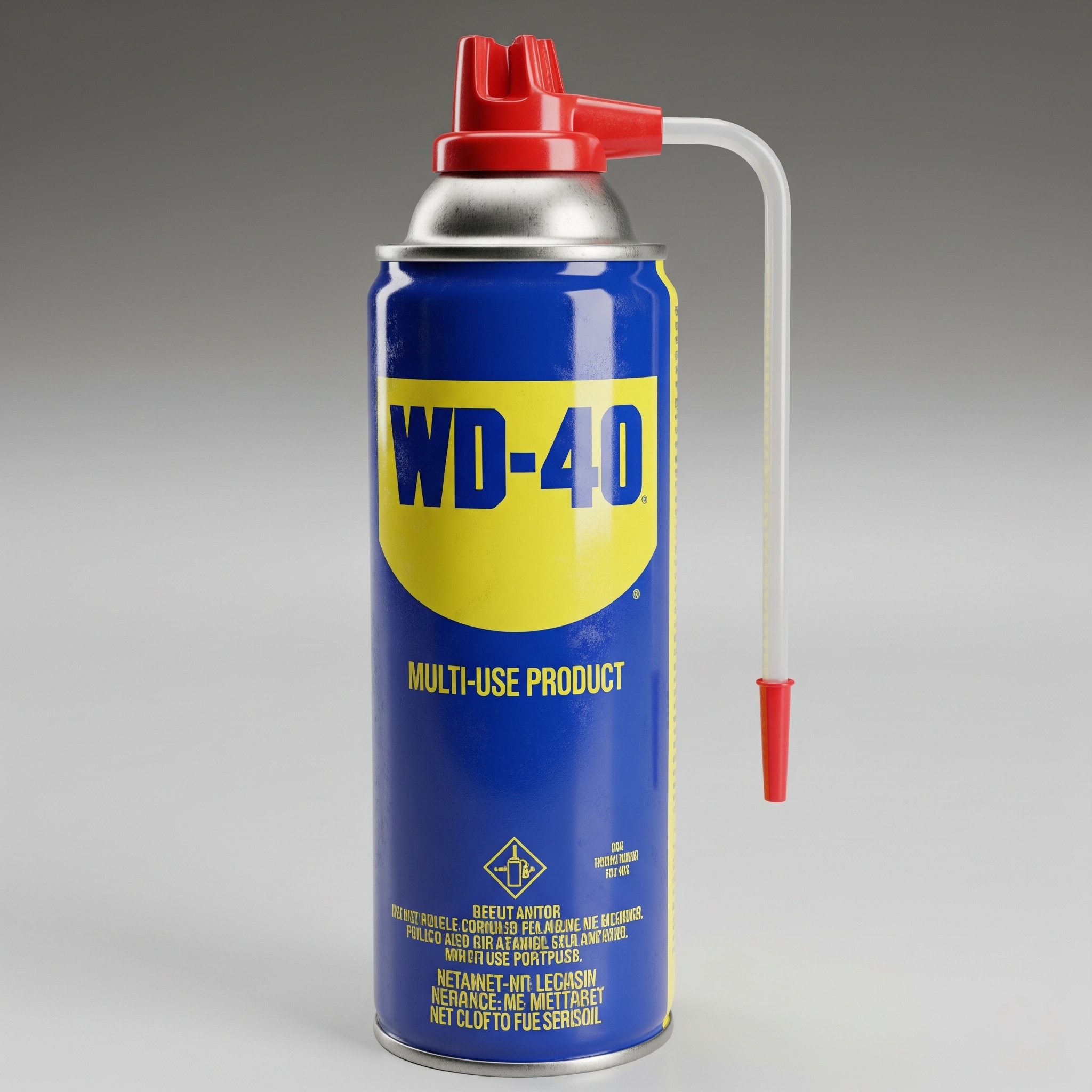
Remove Rust from Stainless Steel
WD-40 offers a fast and easy way to remove rust from stainless steel. Many people choose this product because it is simple to use and works well for light rust. If you want to know how to remove rust from stainless steel without harsh scrubbing, WD-40 can help you achieve a clean, shiny surface.
Spray and Wait
Start by shaking the WD-40 can. Hold it a few inches from the rusty area. Spray a light, even coat over the rust. Make sure you cover the entire spot. Let the WD-40 sit for about 10 to 15 minutes. This waiting time allows the formula to break down the rust and loosen it from the stainless steel. If you want to know how to remove rust from stainless steel with little effort, this step is key.
Tip: For small items, you can spray WD-40 onto a cloth and dab it directly onto the rust. This helps you control the amount and avoid overspray.
Gentle Brushing
After the waiting period, use a soft brush or a non-abrasive sponge. Gently scrub the area in the direction of the grain. This method helps you remove rust from stainless steel without scratching the surface. If some rust remains, repeat the spray and wait process. Always wipe the area with a clean, dry cloth when you finish. This step removes any leftover WD-40 and rust particles.
You can use WD-40 on kitchen appliances, sinks, tools, and outdoor grills. Many people find it helpful when learning how to remove rust from stainless steel at home. The process is quick and does not require special skills.
Safety Tips
WD-40 is safe for most stainless steel surfaces when you use it as directed. You should always work in a well-ventilated area. Wear gloves if you have sensitive skin. After you remove rust from stainless steel, rinse the area with water and dry it completely. This prevents new rust from forming.
Note: WD-40 works best for short-term cleaning and protection. If you use it too often or leave it on the metal for a long time, it can build up a sticky, brown residue. Some users report that this residue is hard to remove and may require extra cleaning with acetone. For this reason, always wipe off any extra WD-40 after you finish. Avoid using WD-40 on internal threads or places where residue could cause problems.
WD-40 helps you learn how to remove rust from stainless steel quickly and safely. It is a good choice for light rust and regular upkeep. For heavy rust or long-term protection, you may want to try other methods from this guide.
Fine Steel Wool
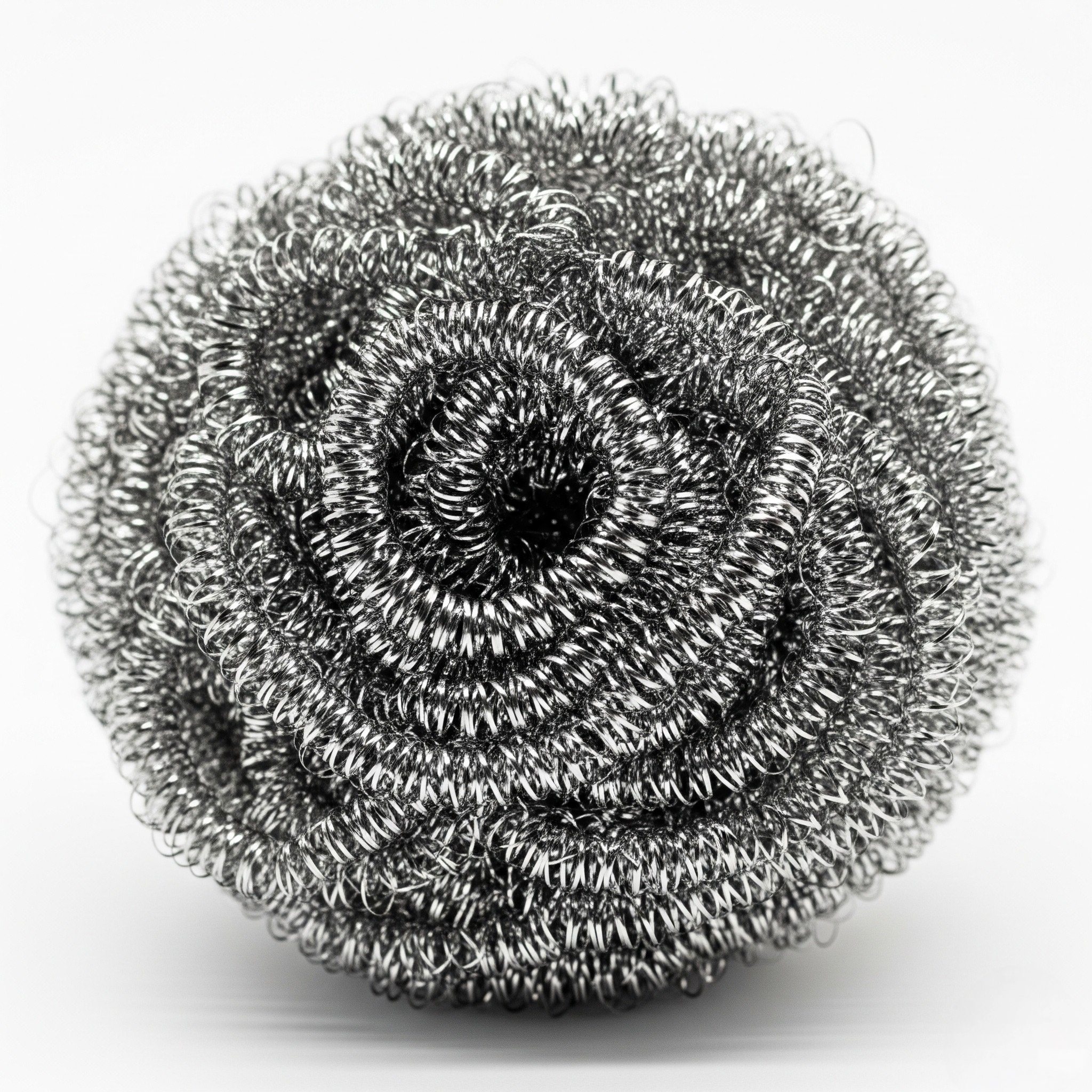
How to Remove Rust
When you face tough rust buildup on stainless steel, you may need a stronger approach. Fine steel wool, especially 0000-grade, can help you tackle stubborn spots. You should always use this method with care to protect the surface.
Vinegar Pre-Treatment
Start by applying white vinegar to the rusty area. The vinegar helps loosen the rust, making it easier to remove. Soak a soft cloth in vinegar and lay it over the rust for about 15 minutes. This step prepares the surface and reduces the effort needed when you scrub.
Tip: Vinegar softens rust buildup, so you do not have to use much force with steel wool.
Gentle Scrubbing
After the vinegar pre-treatment, take a piece of 0000-grade steel wool. This grade is the finest and least abrasive. Gently rub the steel wool along the grain of the stainless steel. Use light pressure and short strokes. Do not scrub across the grain, as this can scratch the finish. If you see the rust coming off, continue until the area looks clean.
If some rust remains, repeat the vinegar soak and gentle scrubbing. Always check your progress to avoid over-scrubbing. When you finish, rinse the area with clean water and dry it with a soft towel.
Safety Tips
You must use caution when using steel wool on stainless steel. Even fine steel wool can scratch the surface if you press too hard or rub in the wrong direction. Follow these steps to keep your stainless steel safe:
- Always choose 0000-grade steel wool for the least abrasion.
- Wear clean gloves to prevent fingerprints and stains.
- Rub only along the grain of the metal, never across it.
- Use mild soap or detergent if needed, but avoid harsh chemicals.
- Rinse thoroughly with clean water after cleaning.
- Dry the surface completely with a soft cloth.
- Avoid using steel wool or abrasive pads on polished or delicate finishes.
- Keep stainless steel away from chloride solutions and corrosive substances.
Note: Using steel wool too often or with too much force can damage the protective layer on stainless steel. This damage can lead to more rust buildup in the future.
If you want to know how to remove rust from stainless steel without causing harm, always use gentle pressure and proper technique. For most cases, soft sponges or microfiber cloths work better. Reserve fine steel wool for the most stubborn rust spots, and always follow up with careful rinsing and drying.
Oxalic Acid Cleaners
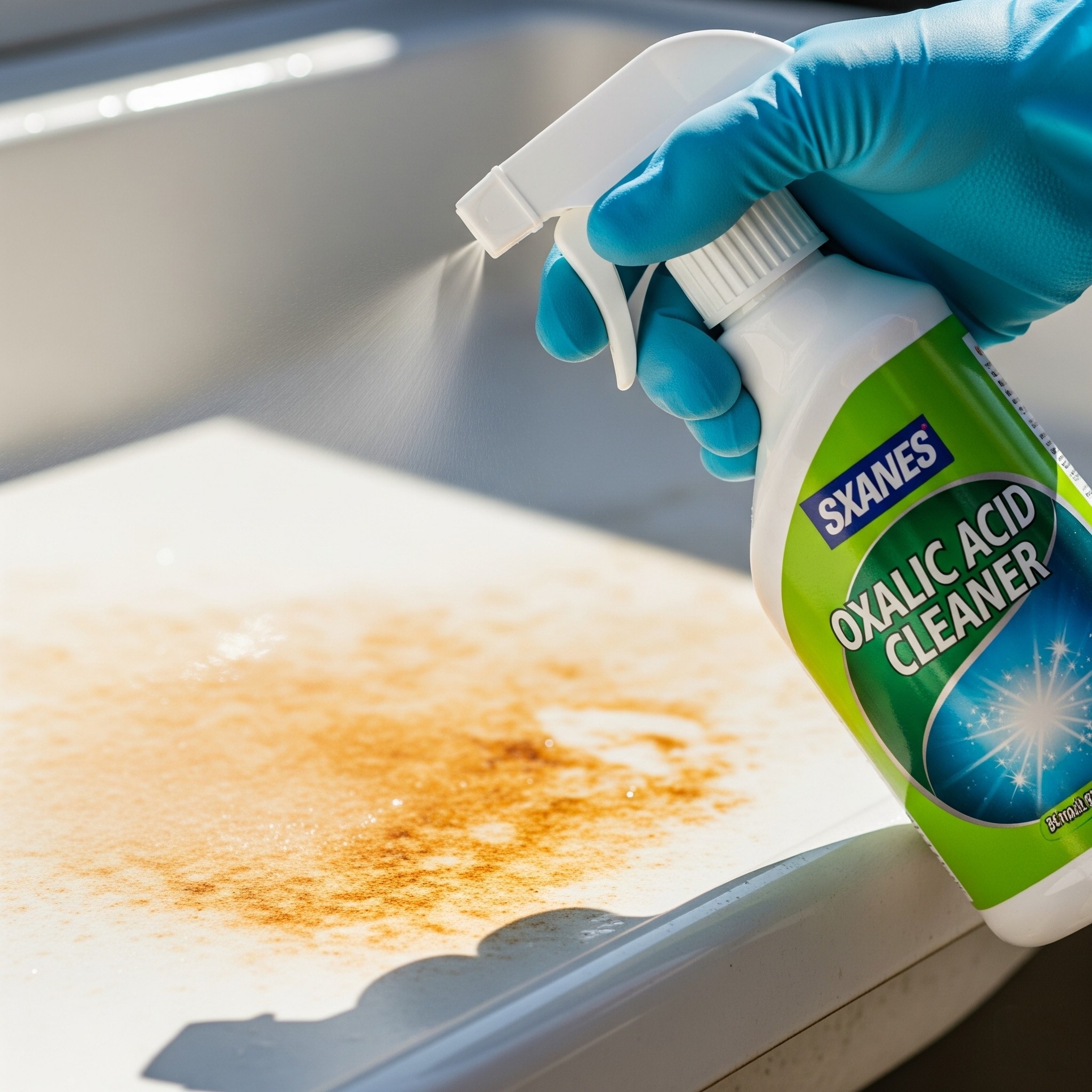
Remove Rust
Oxalic acid cleaners give you a powerful option for removing deep or stubborn rust from stainless steel. You often find oxalic acid in specialty cleaning products like Bar Keepers Friend, Zud, or other rust removers. These products work well when home remedies like baking soda or vinegar do not remove all the rust.
Application
You should always read the product label before starting. Most oxalic acid cleaners come as powders or gels. To use them, follow these steps:
- Put on gloves to protect your skin.
- Wet the rusty area with water.
- Sprinkle a small amount of oxalic acid cleaner onto the rust. If you use a gel, apply a thin layer with a soft cloth.
- Let the cleaner sit for 1–5 minutes. The acid will break down the rust during this time.
- Use a non-abrasive sponge or soft brush to gently scrub the area. Always move along the grain of the stainless steel.
- Check your progress. If rust remains, repeat the process.
Tip: Always test the cleaner on a hidden spot first. This helps you avoid unwanted changes to the finish.
Rinsing
After you finish scrubbing, rinse the area with plenty of clean water. You must remove all traces of the cleaner. Any leftover acid can damage the stainless steel or cause new rust. Dry the surface completely with a soft towel. This step helps prevent water spots and keeps your stainless steel shiny.
| Step | Action | Purpose |
|---|---|---|
| Wet the surface | Use water | Prepares the area for the cleaner |
| Apply cleaner | Sprinkle powder or spread gel | Targets rust spots |
| Wait | Let sit for 1–5 minutes | Allows acid to break down rust |
| Scrub | Use soft brush or sponge, follow the grain | Removes loosened rust |
| Rinse thoroughly | Use clean water | Removes all cleaner residue |
| Dry | Use soft towel | Prevents new rust and water spots |
Safety Tips
Oxalic acid is a strong chemical. You must use it with care. Always wear gloves to protect your hands. Work in a well-ventilated area. Avoid breathing in any dust or fumes from the cleaner. Never mix oxalic acid with other cleaning chemicals. This can create dangerous reactions.
- Keep oxalic acid cleaners away from children and pets.
- Store products in a cool, dry place.
- If you get cleaner on your skin, wash it off right away with soap and water.
- If you spill cleaner, wipe it up and rinse the area well.
⚠️ Note: Oxalic acid can irritate your skin, eyes, and lungs. Always follow the instructions on the label. If you feel sick or have trouble breathing, get fresh air and seek medical help.
You can use oxalic acid cleaners to remove deep rust from stainless steel. When you follow safety rules, you protect yourself and keep your stainless steel looking its best.
Prevention Tips
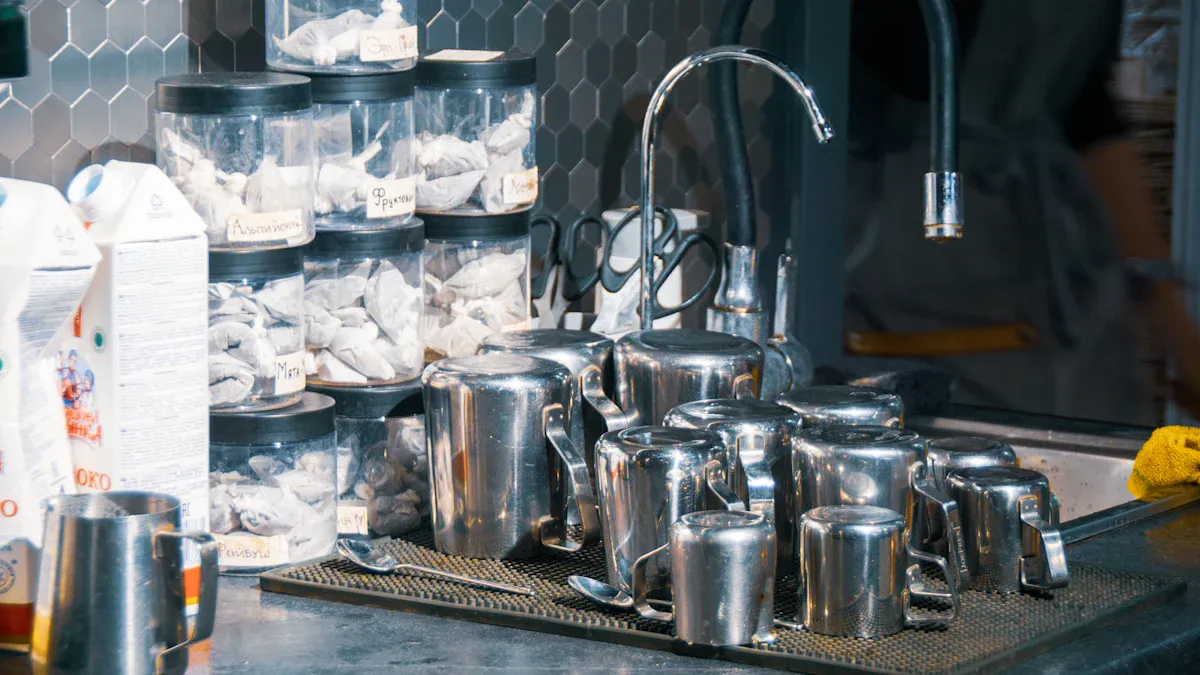
Regular Cleaning
You can stop rust on stainless steel by cleaning it often. Cleaning helps keep the special layer that protects the metal. Follow these easy steps to make a good cleaning habit: First, wipe the surface with a soft cloth, warm water, and mild soap. This takes away dirt and keeps the metal strong. Do not use rough pads, strong chemicals, or tools made of iron. These can scratch the metal or leave bits that cause rust.
Pay extra attention to weld spots. Clean these well after they get hot to help them fight rust. If you see light rust, use a baking soda paste and a plastic scrubber. Always scrub in the same direction as the grain. After cleaning, rinse with warm water. Dry the surface all the way so the protective layer can come back. For tough rust, use cleaners with oxalic acid, but always be careful and follow the safety rules. Only grind off rust if you really have to. Grinding can spread iron and damage the metal.
Tip: Cleaning often not only gets rid of dirt but also helps protect your stainless steel from rust in the future.
Drying
If you leave water on stainless steel, it can cause rust, especially if it is humid. After you clean, dry the metal with a soft towel. Make sure you dry the corners and edges where water can hide. Drying stops water spots and keeps new rust from starting. You should also dry stainless steel after spills or if it gets wet. This easy step keeps your sinks, tools, and appliances looking nice.
Even a little water left behind can start rust. Drying quickly is one of the best ways to protect your things.
Protective Coating
A protective coating gives extra help against rust. These coatings make a shield that blocks water, air, and chemicals from touching the metal. Some coatings, like passivation layers, make a thin film that can fix itself if scratched. Others, like EnduroShield, add a clear layer that does not crack or change color. This kind of coating works on both new and old stainless steel and makes cleaning easier.
Protective coatings also keep your stainless steel safe from strong cleaners and dirty air. Thick primers and clear coats make a strong layer that stops damage from the sun and harsh cleaners. If the coating gets damaged, you can fix it by cleaning and putting on more product. This brings back the shield and keeps rust away.
Note: Always be gentle with coated stainless steel. If you see chips or scratches, fix them fast so rust does not start.
If you follow these tips, your stainless steel will last longer and look great. Cleaning, drying, and using a good coating all help stop rust before it can begin.
Mistakes to Avoid
When you clean stainless steel, you want to keep it looking new and free from rust. Many people make simple mistakes that can damage the surface or even make rust worse. By learning what to avoid, you protect your investment and keep your stainless steel shining.
Harsh Abrasives
You might think that scrubbing hard will remove stains faster. However, using harsh abrasives can do more harm than good. Abrasive cleaners, steel wool, and rough pads scratch the surface. These scratches break the protective layer on stainless steel and leave it open to rust. Maintenance experts warn that even steel brushes or highly abrasive pads can deposit tiny bits of carbon, which look like rust spots and make the problem worse.
Tip: Always use soft cloths, non-abrasive sponges, or brushes made for stainless steel. Rub gently and follow the direction of the metal grain. This keeps the finish smooth and prevents dirt from getting trapped.
Here are some common mistakes that lead to increased rusting: 1. Using abrasive cleaners or tools that scratch the surface. 2. Not wiping in the direction of the grain. 3. Leaving dirty items or standing water on the surface. 4. Using harsh chemicals like chlorine or bleach. 5. Cleaning with hard water and not drying afterward. 6. Letting grime or spills sit and dry.
Skipping Rinse
After you clean stainless steel, you might forget to rinse it. Skipping this step leaves behind cleaning products, dirt, or minerals. These residues can react with the metal and cause stains, streaks, or even rust. Hard water, in particular, leaves spots if you do not rinse and dry the surface.
Always rinse with clean water after using any cleaner. Dry the area with a soft towel to stop water spots and keep the protective layer strong.
If you let grime or spills dry on the surface, cleaning becomes harder and the risk of damage increases. Make rinsing and drying a habit every time you clean.
Mixing Chemicals
Mixing cleaning chemicals can seem like a way to boost cleaning power, but it is very dangerous. When you mix products like bleach, ammonia, acids, or sodium hydroxide, you can create toxic gases such as chlorine or chloroform. These gases are not only harmful to your health but also highly corrosive to stainless steel. Chemical reactions can also generate heat and damage both the container and the metal surface.
- Bleach can cause pitting and crevice corrosion on stainless steel.
- Different cleaners have different pH levels, which can increase corrosion risk when mixed.
- Some chemical combinations can even damage the protective layer, leading to faster rusting.
⚠️ Warning: Never mix cleaning products. Always use one cleaner at a time and follow the instructions on the label.
By avoiding these mistakes, you keep your stainless steel safe and looking its best. Always follow safe practices, use gentle methods, and handle cleaning products with care. This approach helps you prevent rust and extend the life of your stainless steel items.
There are lots of quick and safe ways to clean rust from stainless steel. Pick gentle options like baking soda, vinegar, or special cleaners made for stainless steel. Always wash with mild soap and warm water, then rinse and dry with a soft towel. Experts say not to use rough scrubbers or cleaners with chlorine. Clean your stainless steel often and use protective coatings to keep it looking nice. By following these steps, you can remove rust and keep your stainless steel in good shape.
FAQ
You can use Bar Keepers Friend or a commercial cleaner for quick results. These products work fast and do not damage the surface. Always follow the instructions for how to remove rust from stainless steel safely.
Yes, you can use baking soda, vinegar, or lemon and salt. These methods show you how to remove rust from stainless steel with items you already have at home. They are safe and effective for most surfaces.
If you use gentle methods, you will not harm your items. Always scrub along the grain and avoid harsh abrasives. Following the right steps for how to remove rust from stainless steel keeps your surfaces looking new.
You should clean your stainless steel weekly. Regular cleaning helps you learn how to remove rust from stainless steel before it becomes a problem. Dry the surface after each wash to stop new rust from forming.
Never use steel wool, bleach, or harsh chemicals. These can scratch or damage the finish. Stick to safe methods for how to remove rust from stainless steel to protect your investment.
No, you should never mix cleaning products. Mixing chemicals can create dangerous fumes and damage your items. Always use one method at a time when learning how to remove rust from stainless steel.
For tough stains, use oxalic acid cleaners or a baking soda and vinegar paste. These options show you how to remove rust from stainless steel when other methods do not work. Always wear gloves and follow safety instructions.
Never use steel wool, bleach, or harsh chemicals. These can scratch or damage the finish. Stick to safe methods for how to remove rust from stainless steel to protect your investment.
Tip: Always test any cleaner on a hidden spot first. This helps you see how to remove rust from stainless steel without risking damage.



